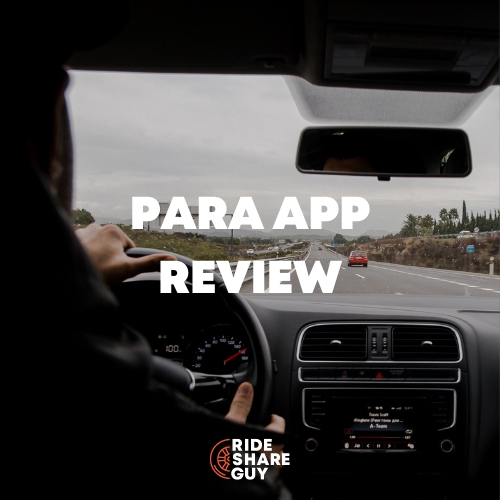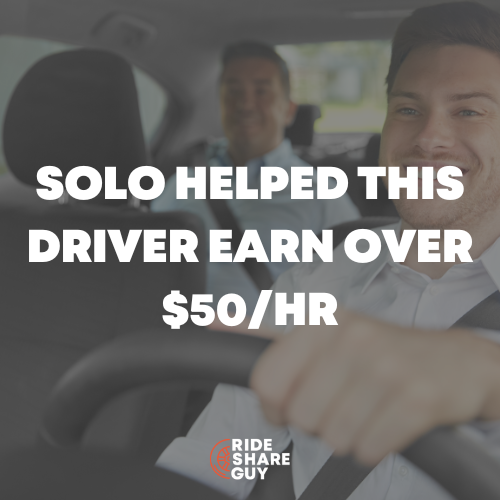Recently, Lyft announced it would be rolling out upfront pricing to various markets across the United States. While Senior RSG contributor Sergio Avedian is happy to get this feature, which drivers have wanted for years, is this really a rate cut in disguise? Sergio explains the upfront pricing test, where it’s available, and his strategies to work smarter, not harder.
I mostly drive for Uber in Los Angeles, CA. The reasons are pretty clear: a better platform, busier than Lyft, better pay, and since Prop 22 passed, I get to see the upfront destination of the passenger with some restrictions.
I have to accept five of the last 10 requests to keep this privilege, but I do it because seeing where the rider is going before accepting a ping is huge for me. Although I have only 6 seconds to make a decision, it is a game changer.
Lyft on the other hand, has never given this valuable information upfront, except for top tier Diamond/Platinum drivers. Now comes a “pinky swear” moment. Lyft is finally giving us drivers what we want.
However, they are testing this in two formats. Please leave a comment below and voice your opinions on these formats! I have very clear ideas about this and we talk about them and many other important subjects during the Show Me the Money Club (SMTMC) livestream on the RSG YouTube channel.
Quick Summary:
- Lyft is now testing upfront information in some markets
- You may see upfront destination information with acceptance rate penalties (similar to Uber)
- Or you may see upfront pricing as well as destination information—it’s currently unknown if there are any penalties involved in this version of the test
Upfront Destination with Acceptance Rate (AR) penalties
As you can see above, this is being tested on the East coast. Accepting/decline a ping with all of this information is a pleasure! However, this version of the test comes with a restriction of keeping a 50% acceptance rate (AR). I don’t think it is that big of a problem.
This upfront destination test version also keeps your city’s current rate card (distance/time). In Los Angeles, the current rate card is 80 cents a mile and 12 cents a minute for the Lyft Standard platform since 2019. I do not have this yet, but I can’t wait to finally have the pleasure of making a judgment with profitability in mind instead of driving without any information.
Upfront Destination
If upfront pricing is successful, I have no doubt it will be released nationwide. Lyft claims this version brings full transparency to the table.
According to Lyft, upfront pay takes the guesswork out of your earnings. With this version of the test, a driver will see what they will make and where the passenger is going before they accept the request. Lyft “pinky swears” to remove the guesswork from your shift.
Wonderful, I think this is a huge positive step forward. But with my negative experiences of the past six years, I have suffered a rate cut every time I have heard the words transparency, clarity, and ease of earnings. I am hoping things are different this time.
As the screenshots below clearly indicate, this version of the test is very different from the one above. Now the base pay does not depend on your city’s rate card (distance/time) that you have been used to since Lyft’s inception. The pay is based on many factors that a Black Box algorithm figures out in milliseconds.
When you get a ride request, you will see all the details upfront, including the exact amount you’ll earn, the pick-up and drop-off locations, the estimated time and distance of the particular trip and a map view of the full ride. If you accept it, you will earn the amount shown upfront. Once the trip is complete, you will also receive any tips, tolls, and streak bonuses you earned.
Again this version has pretty much everything drivers have been asking about for a decade. But the question remains, why is Lyft suddenly being so generous?
As we all know, Lyft, more than Uber, is famous for pulling the old “switcheroo.” Meaning, you would be on your way to pick up a passenger, and the Lyft algorithm would switch you to another passenger.
According to a Lyft spokesperson, these changes are all about improving the driver experience and working on greater transparency:
“From day one, Lyft understood how critically important it is to invest in the driver community and create compelling earning opportunities on the platform. We’re always looking to improve the driver experience and know transparency is important to drivers–which means it’s important to us.
We’re working on new ways to provide greater pay transparency for drivers and have already launched our new upfront pay model in several markets, with plans to expand to additional markets this year. Drivers experiencing this new pay model now see ride and earnings information before they accept a ride–and therefore have greater transparency into and control over their earnings.”
What Could Go Wrong?
Here are some foreseeable problems with this version of the test:
- What if the passenger changes the destination of the trip? A driver has accepted the ride with a specific Upfront fare, what if the trip is extended by another 10 miles? Since there is no more rate card, what will the adjustment be to the driver’s earnings? Most importantly, will it be fair?
- What if the famous “switcheroo” takes place? Assume you accepted a profitable trip according to your own metrics, now the Lyft algorithm changes that with no particular information, and you are simply directed to the new rider.
- Does this format come with AR restrictions? Will the drivers be penalized for turning down a lot of money-losing requests?
- Will drivers still be able to use two destination filters?
- What will happen to Lyft driver tiers, the useless points system, benefits?
Lyft has launched upfront pay in 18 markets, with plans to expand throughout 2022. Upfront Pay is currently available in: Sacramento, Detroit, Cleveland, Charlotte, Indianapolis, San Antonio, San Bernardino, St. Louis, Pittsburgh, Raleigh-Durham, Columbus, Virginia Beach-Hampton Roads, Memphis, Tucson, Charleston, Louisville, Oklahoma City, and Rio Grande Valley.
My Thoughts & Driver Takeaways
This is something drivers have wanted for a decade. I think it is a major plus, as this takes the driving without information on the Lyft platform out of the equation, something I hated for a long time. We are Independent Contractors (ICs) after all, right? This takes us almost halfway to accomplishing that goal. Now, if they let us name the price of the ride, we will finally get there.
During our SMTMC live streams, we talk about Lyft as the little tree that does not get enough sunshine because of the giant tree that is Uber. Over the past six years of me being on both platforms, Lyft has followed in Uber’s shadow. A few weeks ago, Uber announced that they were rolling out upfront fares and destination information of trips nationwide. Here is Lyft with an exact copy of what Uber just did, but in fewer markets.
Call me a skeptic, but I have never experienced Uber/Lyft giving up something as valuable as the passenger destination without getting anything in return. We interviewed the CEO of Uber a few weeks ago. His explanations of why they are giving up this information were not satisfactory to me, and we did a whole SMTMC episode on it.
Under this scheme, Lyft can now totally separate what the rider is paying vs what the driver will be receiving for that specific trip. Not a day goes by that I get an email from a driver complaining about Lyft’s take rate.
Will the company’s take rates go higher under this system? I doubt that they will be lower. Rideshare is a two-sided marketplace, with Lyft holding a huge asymmetric information advantage over the driver and passenger.
I am curious to find out if this will be another rate cut because now, Lyft can do anything it wants when it comes to pricing trips. There will be no more distance/time calculations. We are at the mercy of a Black Box algorithm deciding what a trip is worth.
But if we can pick and choose the most profitable pings for ourselves without penalties (remains to be seen), then all “Ants” should now convert to being “Cherry Pickers”, something I have been doing over the past six years.
If you’ve experienced this upfront information in your market, please share your experiences with us in the comments below!
-Sergio @ RSG




